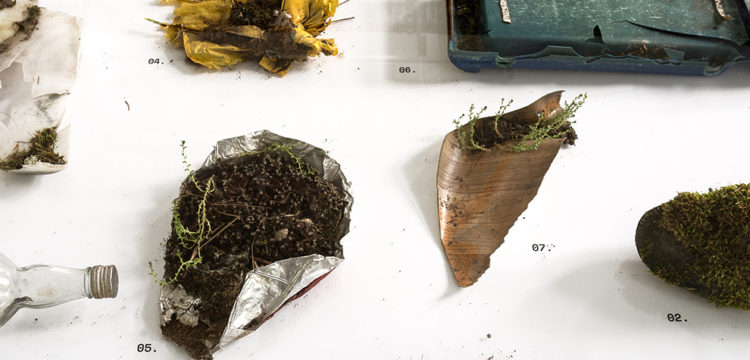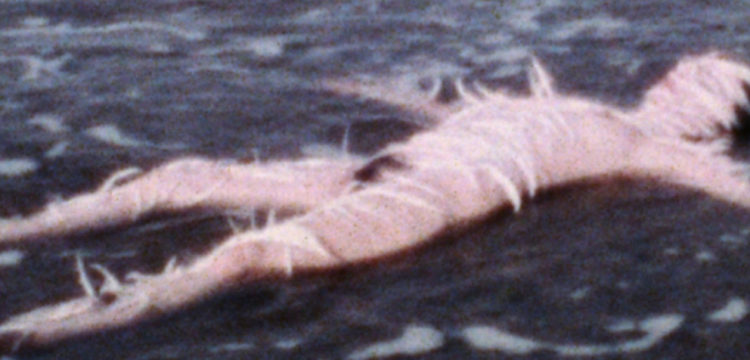Towards Ecopedagogy
An education embracing ecophilia
Curated by Andrea Lerda, the exhibition Ecophilia emerges from the sphere of considerations in matters of sustainability that the Museomontagna has been exploring since 2018, fully aware of the role that mountain culture, and the institution that represents it, plays in critically tackling the environmental and social challenges of today and tomorrow. This project continues the “Sustainability Programme” initiated by the Museum with Post-Water, followed by Under Water (in the Filatoio, or old spinning mill, of Caraglio) and Tree Time (in the Museum and the MUSE in Trento): exhibitions characterised by a narration that—thanks to a dialogue between art, science and the Museum’s collections—focused attention on the consequences of mankind’s impact on Earth, as well as on the possible synergies between the human species and nature.
This new exhibition evolves around the concept of “ecophilia”, understood, according to the definition proposed by Ruyu Hung, Professor of Philosophy of Education at the Department of Education of the National Chiayi University of Taiwan, as a guiding thread for conceiving a new sense of empathy, an affective and corporeal bond with the world, both living and non-living, with which we coexist. A goal that we can reach by shifting from an anthropocentric way of thinking to a post-anthropocentric and ecocentric one, embracing a new multi-species vision of the world, creating new narrations and constructing new constellations of opportunities.
The following is an excerpt from the catalogue accompanying the exhibition, featuring contributions by Rosi Braidotti, Giuseppe Barbiero, and Ruyu Hung.
The environmental crisis is one of the most urgent problems for all humankind in modern times. Environmental problems call for reflection and examination of the human-environment relationship and raise questions, such as how human beings value the environment, how human beings understand the nature of the environment, etc. One of the most important issues is the careless and reckless exploitation of the environment by human beings. As a philosopher of education, I am concerned about how the current educational ideas and practices reinforce such an exploitative way of thinking and doing, and how we can bring change to education.
What on earth makes the mainstream mode of education an accomplice in the human exploitation of the environment? Among many complicated causes I highlight one as decisive, which is the separation between human beings and the environment with respect to body and mind. This sounds confusing because everyone is definitely situated, living and working in a specific environment, e.g. home, classroom, office, park, café, market, and so on. The problem is that being in a place does not necessarily mean that one cares about and feels a connection with this place. When we take the environs as replaceable, resourceful, instrumental and objective spaces, we come to feel that our surroundings and the things and non-human beings within are just materials prepared for our access and use. Their value depends on how useful, how convenient, how efficient they are to serve our purpose. More importantly in the realistic world, the value of the environs is often determined by how much profit can be generated from this area.
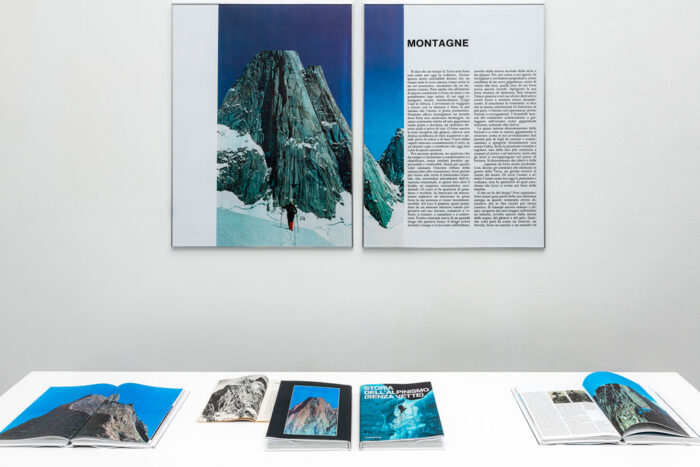
Poster, 70x100cm. Courtesy Museomontagna. Photo Mariano Dallago.
With this premise, the current education has been driven to develop under the guidance of pragmatic and useful values, and thereby the status of the place presented in education is a resource. Human beings no longer care about the “meaning” and “meaningfulness” of the place. The value of a place, indeed, turns into the price of the place, especially the market price, the monetary price. Hence the meaning of the place does not count. Consider more deeply. The meaning of a place comes from the evaluation based on personal, individual and private experience of the place, which cannot be substituted or exchanged with the experience of others. A place matters or means to me because I have my own personal, subjective and private experience of this place, which means, I contact and interact with the place with my own body and mind. When a place does not mean something to me but only has a market value to me, I do not dedicate my body and mind to it. I can only invest my intellect in it, to calculate its costs and benefits, how useful it is.
This is in general the view towards places presented in the current education. It is how the present education separates humans from the environment. Other factors also reinforce the separation between human beings and environments. The modern mode of education is characterized by what David Sobel refers to as “premature abstraction”. Premature abstraction means that school children are taught in a very abstract and disembodied way from a young age. For me, the education of premature abstraction in terms of phenomenology is a form of education that attenuates the lifeworld. The inclination towards premature abstraction in education is particularly prominent in East Asian Confucian heritage cultures (CHCs), such as China, Japan, Korea, Taiwan, Singapore, and Hong Kong. There are two primary reasons that support the phenomenon of “premature abstraction” in education.
First, there is a powerful tradition of credentialism which dominates the CHCs” schooling system. The credentialist schooling system results in a bias toward academic achievement and intellectualistic learning. Learning tends to be narrowed down to the mere acquisition of knowledge and increased scores. Practices and actions in real life tend to be ignored because their relation to higher scores is indirect. Children spend most of their time indoors for more drills, e.g. reciting and doing exercises and mock tests. As a result, they hardly have any spare time to have experiences in the outdoor natural environment. Second, many educators in CHCs stick to a conservative belief that schools are a “pure and innocent place” that is intended for learning only and should be free from “social contamination”.
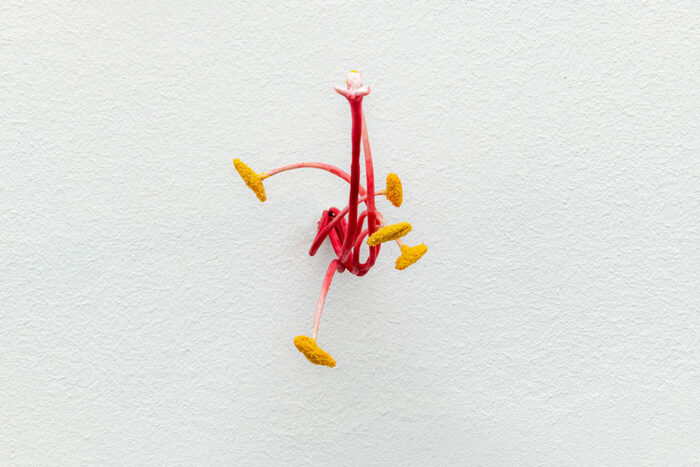
Students must concentrate all their attention on nothing but academic studies. Issues in real life such as cleaning, washing, or even political or social matters concerning the public sphere are seen as irrelevant. Schools are viewed as an independent institution separate from the other units, groups and institutions in society. This quasi-essentialist view isolates schools from the real world, reduces learning to the sheer acquisition of abstract and academic knowledge, and disconnects learning at schools from learning in life.
The bias toward credentialism and the pure-school view work together to trap education in the frame of “premature abstraction”. Furthermore, premature abstraction brings about two features in education: “disembodiment” and “denaturalization”. Disembodiment in education means the neglect of the bodily aspects of the process of learning, such as concrete sensory experiences, kinetic movements, bodily perceptions, real situations, feelings and emotions.
Based on this idea, the goal of education is focused on the improvement of academic performances and intellectual ability. The tendency of disembodiment is related to the second feature of denaturalization, meaning the deficiency of natural experiences in education. Most learning modules are designed and provided as indoor activities. Sometimes, even courses on environmental issues are taught in classrooms. The modern form of education may permit people to know more and more about nature while having less and less “genuine” experience of nature. People learn about nature by means of technology. Their natural experiences are mainly “mediated” or “manipulated”. In this case, nature is something experienced indirectly and remotely. Somehow natural disasters are taken as nature. Thus children easily feel an aversion to nature, or what Sobel calls “ecophobia”. The negative reaction to nature could contribute to the collision between human beings and environments (Kahn, 1999; Orr, 2004; Thomson, 2004).
The above consideration of the problems of the current mode of education leads us to a further inquiry: can we redirect the development of education? How can we reconceptualize an education that connects humans and the environment, an education that aims to nurture a love of nature in people? In my articles published in 2008 and 2014, I proposed the concepts of “ecophilia” and “ecopedagogy”. “Ecophilia” refers to the love of nature and “ecopedagogy” refers to ecophilia-oriented education. In this article, I intend to elaborate further and more widely on the meaning of ecophilia, and argue for the possibility of developing the approach of ecopedagogy.
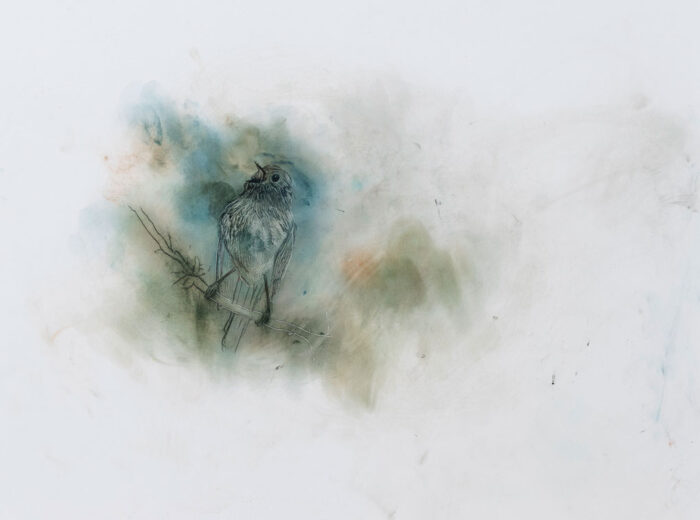
The concept of ecophilia is inspired by Edward O. Wilson’s notion of “biophilia” and Yi-Fu Tuan’s concept of “topophilia”. Biophilia means “the innately emotional affiliation of human beings to other living organisms” whereas topophilia means “the affective bond between people and place or settings.” The prefix “eco” comes from the Greek “oikos”, meaning “dwelling place, house, and inhabitation”, while “philia” comes from the Greek “philia”, meaning “affection and loving”, to express “the love of dwelling place.” Eco (oikos) is widely used to express the sphere that all living organisms inhabit today, i.e. the planet or nature. Based on the above, “ecophilia” can be understood as the human affective bond with the surroundings and all living and non-living beings within.
I suggest that the nurture of ecophilia should be regarded and esteemed in education. Education with the goal of connecting human beings with their surroundings, and cultivation of the human affinity with all lifelike processes and abiotic factors, is “ecopedagogy”. The construction of the notion of ecophilia is based on two concepts: biophilia and topophilia. The first one focuses on the relationship between human living beings and nonhuman living beings, while the second one concentrates on the relationship between human beings and the physical environment.
Biophilia
E. O. Wilson is a luminary of biology who has devoted his life to nature study. In his 1984 publication Biophilia, Wilson attempts to theorize the harmonious relationship between humans and nature. He defines biophilia as “the innate tendency to focus on life and lifelike processes.” Using the term “innate tendency” indicates that biophilia is meant to be part of human nature and is thought to co-evolve through generations. Wilson refers to the process of coevolution as “biocultural evolution”—“during which culture was elaborated under the influence of hereditary learning propensities while the genes prescribing the propensities were spread by natural selection in a cultural context”. Wilson’s interpretation of biophilia includes the human tendency of affiliation with nature as well as the notion that human beings share the same genetic basis with other natural beings. Human cultures develop with biological evolution; however, human history is minute compared with the natural history of our planet. Thus nature and culture cannot be clearly separated as two distinct entities. Numerous symbols of nature can be found in many cultures; furthermore, human cultures are generated, adapted and developed from nature.
Wilson does not deny that nature is both attractive and aversive to human beings. For example, the aversion to serpents seems to be common to all humans across cultures. Even chimpanzees raised in the laboratory appear apprehensive in the presence of snakes, although they have not had any similar previous experience. As Wilson states, around the world serpents and snakelike creatures are the dominant elements of dreams in which animals of any kind appear. Inspiring fear and veneration, they are recruited as the animate symbols of power and sex, totems, protagonists of myths, and gods.
This natural tendency, according to Wilson, may be interpreted as a deeper affiliation with life based on self-protection and self-interest. There are records of sickness and death caused by poisonous snakes throughout human history. And yet in Madagascar where no large or poisonous snakes exist, the indigenous primate lemurs show no fear or similar responses to snakes. The aversion and attraction of nature are rooted both biologically and culturally in living beings. In this sense, biophilia does not only include preference for but also awe and veneration of nature.

Moreover, there is a tendency to partiality for diversity in biophilia. As Wilson states, “we should pay more attention to the quality of our dependence on other organisms. The brain is prone to weave the mind from the evidences of life, not merely the minimal contact required to exist, but a luxuriance and excess spilling into virtually everything we do.” This shows the significance of conserving the diversity of life. According to Kellert, five points are worth noting with respect to the notion of biophilia: 1) the human inclination to affiliate with life and lifelike processes is inherent, i.e. biologically based; 2) humans” inherent affiliation with life is part of human evolutionary heritage; 3) this human inclination is associated with human competitive advantage and genetic fitness; 4) biophilia is likely to increase the possibility for achieving individual meaning and personal fulfillment, i.e. self-interest; and 5) the self-interested basis of biophilia is appropriate for developing a human ethics of care and conservation of nature, especially the diversity of life.
According to Wilson and Kellert, biophilia is the inherent inclination in humans to have an affiliation with life and lifelike processes, which is biologically evolutionary and self-interested. During the process of evolution, the tendency to affiliation with life is translated into care for and conservation of life as well as awe and veneration of life. “Life” here includes all forms of life. Among these life forms, some that directly benefit human thriving and flourishing are treated with utmost care and a spirit of conservation; some that cause harm, including sickness and death, are treated with veneration and fear. Either care or awe, or both, can be grounded to develop a conservation ethics of nature which aims to sustain biodiversity. The more various life forms there are, the more likely it is for human living to be sustained.
The most harmful part of ongoing environmental despoliation is the loss of biodiversity. The reason is that the variety of organisms, from alleles (differing gene forms) to species, once lost, cannot be regained. If diversity is sustained in wild ecosystems, the biosphere can be recovered and used by future generations to any degree desired and with benefits literally beyond measure. To the extent it is diminished, humanity will be poorer for all generations to come.
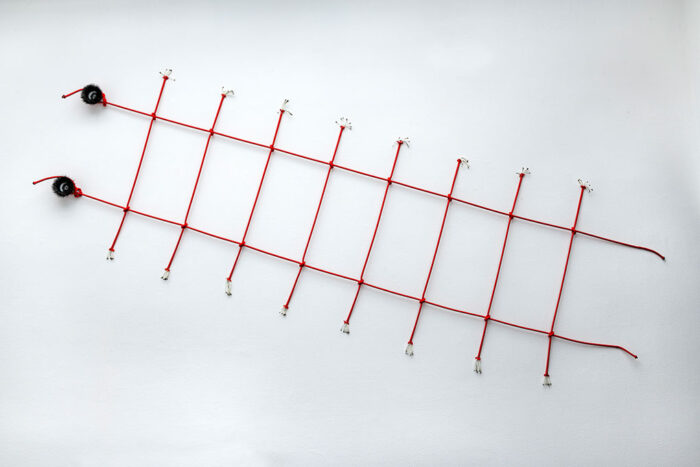
The diversity of life can be cherished based on its utilitarian value since there is vast material wealth in nature, e.g. the resources of food, energy and so on. However, its aesthetic and spiritual potential should be valued as well. Voluminous literature has been written through history and across cultures depicting the satisfaction, inspiration and sense of beauty and reverence experienced in nature. Kellert identified the following nine dimensions of the biophilia tendency: the utilitarian, naturalistic, ecologistic-scientific, aesthetic, symbolic, humanistic, moralistic, dominionistic and negativistic. Kellert’s typology of biophilia values, in my view, has gone beyond the scope of the original definition of biophilia as “life and lifelike processes”. According to Kellert, “the symbolic experience of nature reflects the human use of nature as a means of facilitating communication and thought”. Nature is used as a symbol or means of communication and language. The understanding and usage of the concept of nature as a means of communication or symbolism imply that life and lifelike processes are insufficient to convey the full meaning and connotation of nature because non-living entities are also involved. Here we may find that the term “ecophilia” can serve well to express Kellert’s typology of biophilia tendencies. Whether the term “biophilia” or “ecophilia” is adopted, what cannot be denied is that Kellert’s typology reveals the significance of nature in human life: enriching our lives, nature—physical or symbolic—is an important source of meaning in human experience. However, the concept of biophilia may include a lack of interest in the human-physical environment or the human-place relationship, as it is only concerned with “life and lifelike processes”. Therefore, from here on I intend to utilize Tuan’s concept of “topophilia” to complement the aspect of the human-place relationship.
Topophilia
As we read E. O. Wilson’s Biophilia, it seems that the place that Wilson refers to is limited to the natural environment. The non-natural environment could thus be excluded from the scope of discussion of conservation ethics. The problem is that conservation of the wilderness is a part, and not the whole, of environmentalism. Environmental crises take place in both the natural and the human-made, or more specifically speaking, human-affected environments. The amelioration of human-environment relations should include not only the relationship environments. The physical environment, be it natural or human-made or -affected, should be taken into consideration in the context of environmental concerns. Hence I aim to bring the concept of place into focus.
Like nature, “place” is an ambiguous term. This word is used in various and diverse ways. The term “place” is often interchangeable with the terms “space”, “site”, “location”, “area”, “environment” or “region”. However, such an understanding and usage of the term is too broad to say anything substantial. As Casey observes, “to be at all—to exist in any way—is to be somewhere, and to be somewhere is to be in some kind of place”. The place where I am, feel, live and dwell is the place that means something, speaks to and surrounds me and makes a difference in my life. This place is not just any space, any site, any location, any region or any area. Our home, our community or the surrounding area could be this place. A garden, a room, a forest or a building could be the place to me as long as it means something different to me as the experiencing subject. A place that inspires special meaning in me is the place to which I refer here. Edward Relph‘s expression of place is acutely subtle, “places are fusions of human and natural order and are the significant centers of our immediate experiences of the world. They are defined … by the focusing of experiences and intentions onto particular settings. Places are not abstractions or concepts, but are directly experienced phenomena of the lived-world and hence are full of meanings, with real objects, and with ongoing activities.”
This affinity towards the place is known as “topophilia”. In his highly influential work Topophilia, Yi-Fu Tuan describes various modes of perception, attitudes and values that human beings could have in relation to the environment. Tuan points out that the human perception of the environment is greatly influenced by individual differences and preferences, cultures and the physical conditions of environments. As “topophilia” is defined as broadly including “all of the human being’s affective ties with the material environment”, this neologism is a general term which refers to the various and different relationships between humans and environments from a positive perspective.
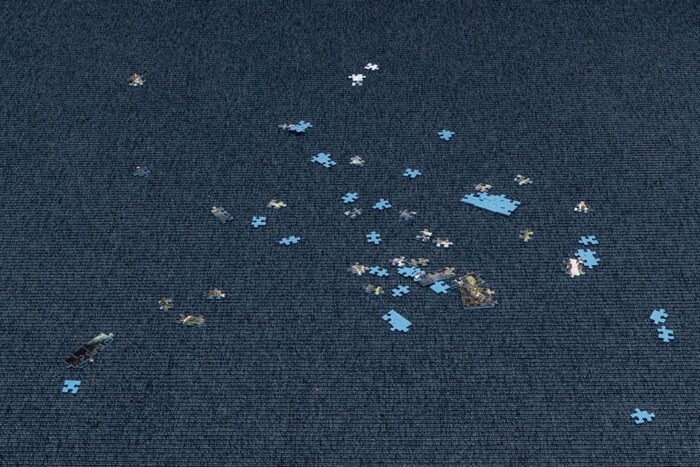
These ties differ greatly in intensity, subtlety, and modes of expression. The response to the environment may be primarily aesthetic: it may then vary from the fleeting pleasure one gets from a view to the equally fleeting but far more intense sense of beauty that is suddenly revealed. The response may be tactile, a delight in the feel of air, water, earth. More permanent and less easy to express are the feelings that one has toward a place because it is home, the locus of memories, and the means of gaining a livelihood.
Two implications can be drawn from the above passage: first, the individual emotions and feelings for the environment vary from person to person, from group to group and from culture to culture; and second, the environment that matters to individuals could be either natural or unnatural. The “environment” that matters stimulates a sense of connections and particularity in people who care about it. A place that matters is distinguished from other normal environments. It is a place of character or of spirit. Relph has described such a place as “the place of authentic sense.” Authenticity means “that which is genuine, unadulterated, without hypocrisy, and honest to itself, not just in terms of superficial characteristics, but in depth.” An authentic attitude to a place is defined as a direct and genuine experience of the entire complex of the identity of places—not mediated and distorted through a series of quite arbitrary social and intellectual fashions about how that experience should be, not following stereotyped conventions.
Through one’s direct and immediate experience of a particular place, this place “matters” and “means” something to one in a very special and unique way. It is no longer any common and normal place but a place of affecting power and of influence. The genuine embodied interactions with the place produce in one’s mind a sense of the authenticity of the place. In this process of experience, the place, “whether a house, a village, a region, or a nation, is a central point of existence and individual identity from which you look out on the rest of the world.” The place full of authenticity and meaning enables one to be oneself and experience a greater sense of completeness. As classical poets like Alexander Pope (1688–1744) and John Clare (1793–1864) put it, the place has its own particular “genius” as in genius loci. On this basis, one would have feelings and care for this place and thereby be motivated to conserve the place. Whichever place prompts this authentic sense is the topological source of Topophilia.
One might argue that all kinds of spaces could evoke topophilia in individuals as long as they have close relationships with the people in those spaces. However, topophilia is not necessarily connected with humans’ environmental awareness and ecological concerns. Some people might have connections with artificial places, e.g. urban areas, indoor environments or even virtual environments. As the affective bond between people and place, topophilia can also be expressed as the connections between people and cities, urban areas and architectural settings. Thus the mere concept of topophilia is insufficient to cultivate ecophilia within each individual. We need to care about and be attentive to other living beings that share the same place with us. Biophilia means caring about the sustainability of other forms of life in the place that we care about. Therefore, biophilia and topophilia are both useful in conceptualising Ecophilia.
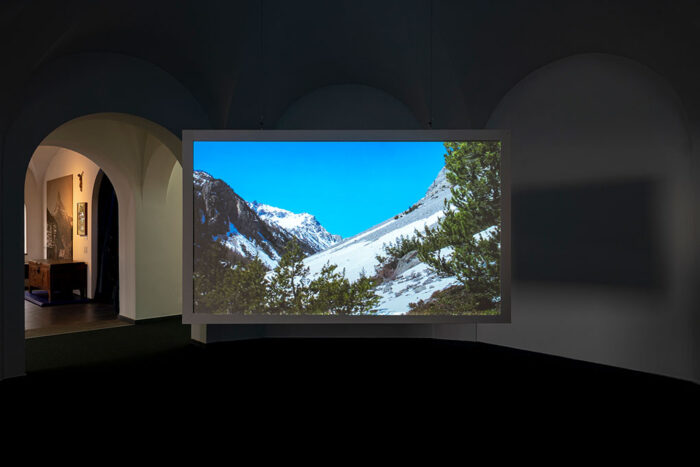
Ecophilia
Drawing from the concepts of topophilia and biophilia, the neologism “ecophilia” refers to the affective and embodied bond between humans and place and between humans and nature. However, nature and place are both ambiguous and do not carry the same meaning. While the concept of nature is different from that of place, sometimes these two concepts can be used to refer to the same thing, such as the natural environment. However, they have subtle nuances which distinguish them.
Place can refer to both the natural environment and the built environment. The size of the place ranges in accordance with the subject. The point is that the place is by no means any space or location at all; rather, it is somewhere for which one has special feelings. For example, a garden where I spend extensive time gardening or strolling is, from my viewpoint, distinguished from other gardens in the world. The significance of the place lies in the personal sense of place. With respect to topophilia, the place I care about is a place that matters to and has meaning for me because I have had personal and concrete interactions with this place. A meaningful place, be it a natural environment or an artificial area, refers to an environment with a certain scope, a particular physical setting, living beings and abiotic Factors.
In contrast, when using the term “nature”, I take Michael Bonnett’s view that nature is self-arising. Self-arising nature is unpredictable, inexhaustible, uncontrollable and unmeasurable in its entirety. Nature can be understood as the natural processes of living organisms and the environment which encompasses the interaction of all beings. Nonetheless, it is not possible for me to have genuine individual experience of all natural environments or all living beings on the planet. The nature that evokes biophilia is not nature in general; rather, it is nature in particular. It could be a particular area of nature, a specific landscape or a particular form of life or a lifelike process. The point is that the “specific” nature with its self-arising particularity means something different to me and is thereby able to evoke biophilia in me.
The meaning of place and the significance of nature converge together in “place-nature”, which includes self-arising processes, such as other life forms, lifelike processes and abiotic factors. Ecophilia is thus understood as the human affinity with place-nature. This conveys an ethics of conservation. Kellert provides a description which harmonizes with this as follows: “the conservation of nature is rationalised, from this perspective, not just in terms of its material and commodity benefits but, far more significantly, for the increased likelihood of fulfilling a variety of emotional, cognitive, and spiritual needs in the human animal. (…) Nature’s diversity and healthy functioning are worthy of maintenance because they represent the best chance for people to experience a satisfying and meaningful existence. Ecophilia is educationally inspirational because it enriches the meaningfulness of human life. Thus, the concept of ecophilia can be considered a guiding idea of education. Such education is what I call ‘ecopedagogy’. From the perspective of educators, the practice of ecopedagogy is to examine, question, criticise and change habitual methods of learning in the current mainstream disembodied pedagogy.”

The Body of the Lifeworld
The purpose of ecopedagogy is to establish human affinity with the place and all lifelike processes. The pursuit of the goal has to be carried out through one’s concrete existence via one’s bodily interaction with the world. This is why the body and its genuine experience matter. The affinity referred to here is not imaginary or fiction-like for other beings and the surroundings. It is a relationship grounded on one’s real and authentic interaction with them and on the awareness of interdependence derived therefrom. Real and authentic interaction has to be lived and experienced vividly. The body plays an irreplaceable role in the process, for it is one’s own “insertion in the common, or intersubjective, field of experience” as well as “the very locus of the experiencing subject, or self, in the phenomenal world.” Without the body, one cannot see, smell, touch, hear or taste anything in the surroundings. Without the body, one can neither move nor interact with others. Without the body, there is no surrounding for there is nothing to be surrounded; there is no environment for there is nothing to be environed. The body can be seen as the pivot of environmental philosophy. Our body is born to feel, act and connect with the world. As David Abram puts it, “The eyes, the skin, the tongue, ears, and nostrils—all are gates where our body receives the nourishment of otherness … The color of sky, the rush of waves—every aspect of the earthly sensuous could draw us into a relationship fed with curiosity and spiced with danger … with Thunder, with Oak, with Dragonfly.”
Drawing on the phenomenological philosopher Merleau-Ponty, I would claim that the idea that the body is an emplaced body and that the environment is an embodied place is central to the notion of ecophilia. Embodiment and emplacement depict the state in which the body and the place interplay with each other. It is through the ongoing interchange between the body and the surrounding place that biophilia and topophilia gradually develop. According to Merleau-Ponty, a human being is not a subject of mind or soul only, but a “body-subject”. The body moves to know, to learn, to perceive and to construct the meaning of the place, i.e. the entities and beings in the surroundings. The point is that neither the body nor the place is a static and fixed entity. Rather, the body and the place are both fluid and changing. The meaning gained by the subject is constructed during the process of continuous interaction between the body and the world: “The body is our general medium for having a world.” The body can be comparable to a work of art, e.g. a piece of music, a painting, a poem or a novel. The meaning of a work of art has to be grasped through one’s own concrete, direct and immediate contact with it. It cannot be conveyed through a third objective medium because the meaning grasped thereby would remain shallow and superficial. For example, a musical work can be introduced through an exposition of the musical notation or an explanation of the composition. However, the meaning gained in this way is impersonal, objective and “cold”. Only when one hears or plays the musical work oneself can this piece “make” special, unique and deep sense to one. Listening to or playing the same piece of music at different times creates different meanings because the body changes as long as it lives. The body’s abilities to express and to perceive constitute the meaningful world. Merleau-Ponty observes as follows: “A novel, poem, picture or musical work are individuals, that is, beings in which the expression is indistinguishable from the thing expressed, their meaning accessible only through direct contact, being radiated with no change of their temporal and spatial situation.”
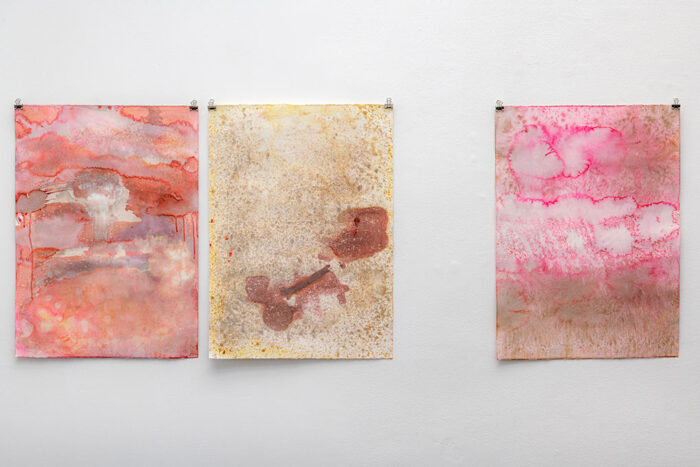
The body pins down the meanings of its world. In Merleau-Ponty’s words, the body is the “nexus of living meanings.” The meaningful world that the body pins down through its lived experiences is the lifeworld. The lifeworld denotes the totality of one’s immediate, direct and pre-refl ective lived experiences. It refers to “the taken-for-granted pattern and context of everyday living through which the person conducts his or her day-to-day life without having to make it an object of conscious attention.” The lifeworld is the “living world”—an “ambiguous realm that we experience in anger and joy, in grief and in love” (Abram, 1996, p. 34). It is because of the lifeworld that “our spontaneous experience of the world, charged with subjective, emotional, and intuitive content, remains the vital and dark ground of all our subjectivity.” Although in daily life many people usually pay little attention to it, the lifeworld is the source of the meaning of existence, life and education. The body anchors and integrates experiences through senses, including sight, smell, hearing, taste and touch.
The lifeworld as the totality of lived experience is able to bring nature and place together. For example, Thoreau and Walden Pond together epitomise ecophilia by fleshing out a meaningful, significant and respectful human-place-nature relationship. Thoreau spent two years, two months and two days at Walden Pond. As a result, he acquired much knowledge about Walden and the entities in and around it and thereby developed strong and deep feelings about Walden and the creatures living there. The flora, the fauna, the rocks and the waters all interweave Walden as an irreplaceable “place”, a source of inexhaustible meanings and memories for him. The book Walden is Thoreau’s phenomenology of the environment (Thoreau, 1983). In this book, Thoreau’s ties with and affinities for the lifelike processes (biophilia) and the whole environment (topophilia) speak for themselves. For Thoreau, Walden Pond is an embodied place, and he is a body emplaced in this space. Ecophilia emerges when the body interplays with the place and the surrounding beings.
Envisaging Ecopedagogy: Some Proposals
As the concept of ecophilia implies biophilia and topophilia, ecopedagogy must also be understood in two respects: nature-oriented learning and place-oriented learning. However, the division does not mean that these two domains are completely separate from each other. By nature-oriented learning, I mean education which takes the human-nature relationship as the guiding theme and the fundamental principle. I suggest that the human-nature relationship in education is understood based on the following three aspects: learning about nature, learning in nature and learning from nature.
Firstly, nature is the subject matter of learning. This may be the most familiar role that nature plays in the current educational approach in CHCs. The study of nature forms the natural sciences, including biology, earth science and physical science. Yet nature in these fields is conventionally taken as a neutral object or a collection of neutral natural phenomena or events. It is not easy to evoke emotions and feelings for nature during the process of traditional study of natural sciences. In contrast, the second and third relationships may be more capable of developing ecophilia in students.
With respect to the second relationship, nature is taken as an environment for learners to be situated. In this view, nature is a place where all organisms are located and settled. Nature is the habitat for all living beings. Or, in more specific terms, nature provides different habitats for different kinds of organisms. The evolution of organisms takes place in nature in particular conditions—in particular habitats. The preservation of diverse habitats thus helps to preserve the diversity and richness of life. As Wilson describes, “The more habitats I have explored, the more I have felt that certain common features subliminally attract and hold my attention.”

Taking this notion a step farther, the more habitats children are able to explore, the more imaginative and creative they may become. Nature holds the potential of offering people the chance to experience differences and variety. The deficiency of experience of diverse forms of nature results in two unfortunate losses: “the knowledge and pleasure that can be imagined and might have been” and “the wide array of experiences that human beings should have evolved to receive” (Wilson, 1984).
As for the third pedagogical relationship between humankind and nature, nature should be taken as a guide during the process of learning. Nature, unlike a human teacher, is a silent and a wordless guide. Nature cannot “speak”, “act” or “teach” intentionally; what people can learn from nature is to pay attention to the interaction between humans and nature. The virtues of modesty, attentiveness, humility and mindfulness and the ability to appreciate and respect nature are the most valuable fruits of this learning process. Let us now examine the place aspect of ecopedagogy, which takes the concept of place as the core of education. Place pedagogy has received much attention in recent years. Some of the most common phrases used in the literature to describe such pedagogy include “place-based education”, “place-conscious education” and “critical pedagogy of place”. Place pedagogy highlights the cultivation of a sense of place and the profound experience of place. Place pedagogy aims at “developing in young people a sense of affiliation with places where they live.”
For a place to be meaningful, one must have many unique experiences of it. The place imprints one deeply and gives one a story for memory. The place has a history. Sometimes the place is the anchor of collective memory of a group of people. It is marked with a certain tradition and culture, for example a temple or a shrine. Sometimes the place is the historical heritage of a people or culture, such as ruins and remains. The human-place relationship includes historical, cultural, societal, economic, political, traditional, individual and psychological dimensions. In this vein, place pedagogy contains “cultural and historical investigations, environmental monitoring and advocacy, real-world problem solving, entrepreneurialism, and involvement in public processes.”
Place pedagogy needs to bring in a large variety of issues and subjects related to the fields of politics, history, geography, and economics in order to “… direct students” attention to local assets that might otherwise remain invisible to them, underlining what is valuable in their home communities and regions and potentially deepening their connections and commitment to place.” In this era of technology, urbanization and modernization are rapidly changing the landscape almost everywhere on the planet. It is very often the case that many places that originally mattered are being changed, developed and replaced with totally unfamiliar appearances. One can never restore one’s connection with the lost landscapes. As the authentic places disappear, the related meanings and memories change as well. The past authentic places can only be recalled in one’s mind. In contrast, sites which cannot inspire a genuine connection with them are placeless. One has no sense of place towards such locations; one does not have an authentic attitude towards placeless locations (Relph, 1976). Indeed, many modern buildings which are designed to cater to the uniform needs and tastes of mass audiences weaken people’s sense of place. Inauthentic locations—or placeless areas—demonstrate the characteristics of Disneyfication, museumization and futurization; in essence, they demonstrate other-directedness (Relph, 1976). An other-directed place is a space that is built to pander or cater to “outsiders, spectators, passers-by, and consumers” (Relph, 1976).
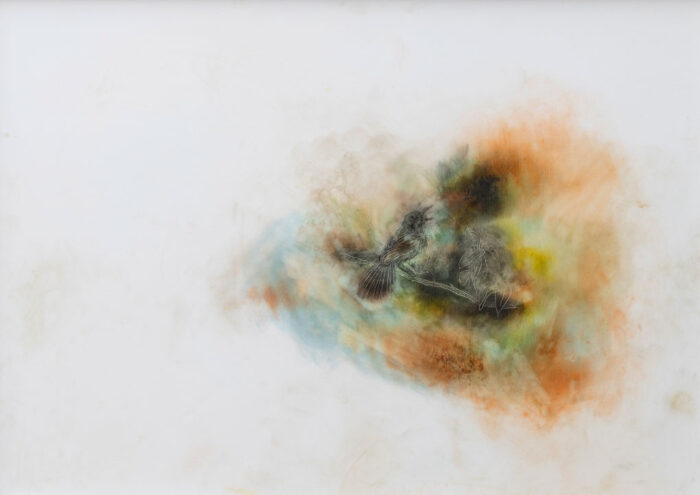
In contrast, an authentic place soothes and shelters its dwellers. The purpose of building other-directed places is to make profit from the outsiders, tourists and consumers. Disneyfication, museumization and futurization characterize deliberate designs intended to produce other-directed landscapes—non-places—that aim to satisfy customers’ appetite for fantasy and entertainment. Instead of affinity and attachment to authentic places, people gain amusement from other-directed spaces. In the relationship of attachment, one is able to restore one’s Selfhood, whereas in amusement, one’s selfhood is forgotten.
All in all, a human being is a being somewhere, a being with other beings. A human being is born to respond and act to his or her surroundings. Education as the understanding of the self implies the comprehension of the location of the self: where one is, where one is situated, where one locates oneself with whom and what and how one acts towards oneself and the surrounding world and beings. In other words, education is about the human-nature and human-place relationships. Ecopedagogy is suggested for the development of sound and amiable relationships between humans, nature and place. As discussed, it is comprised of nature-oriented learning and place pedagogy, seeking human affinity with all living and nonliving beings. For educators, the learning process in search of ecophilia involves becoming ecologically literate. To be ecologically literate means not only being able to read, write and calculate, but also being able to “observe nature with insights, a merger of landscape and mindscape.” As Orr observes, “The ecologically literate person has the knowledge to comprehend interrelatedness, and an attitude of care or stewardship.” Ecopedagogy aims to strengthen in students the human responsibility of stewardship and their awareness of the interrelatedness of all life. In this way, the self-arising process of the place-nature will be taken care of and respected.




